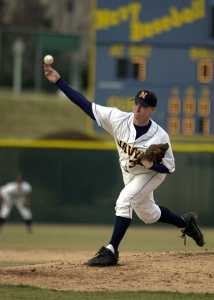06 Apr Pitch Count May Not Be Best Predictor Of Injury In MLB Players
 MedicalResearch.com Interview with:
MedicalResearch.com Interview with:
Thomas Karakolis
Department of Kinesiology
University of Waterloo
Waterloo, Ontario, Canada
Medical Research: What is the background for this study? What are the main findings?
Response: Major League Baseball (MLB) pitchers have an injury rate approaching 1 in 4, depending on the study you look at. As an occupational injury rate, this number is extremely high. In fact, I think you would be hard pressed to find another industry where the injury rate is that high.
One way that coaches and managers in MLB are trying to lower the
injury rate is to restrict the total ‘workload’ on pitchers per
season. Particularly in young pitchers, many MLB organizations
restrict the number of innings a pitcher can pitch based upon the
number of innings they pitched the previous year. Essentially, they
are using innings pitched as a surrogate for workload.
If this is an effective strategy, you would expect a correlation
between the increase in number of innings pitched between successive
seasons and future injury. Our study found that no such correlation
exists. Innings pitched does not appear to be a sensitive enough
measure to asses the true workload a pitcher experiences throughout
the season.
Medical Research: What should clinicians and patients take away from your report?
Response: Using blanket inning or pitch count limits to try and prevent injury
is likely not effective. When it comes to the workload an individual
pitcher experiences throughout the baseball season, coaches, managers,
and even players themselves should be more sensitive to the
differences between each pitcher, and the differences between each
type of pitch a given pitcher throws.
Medical Research: What recommendations do you have for future research as a result of this study?
Response: Players, coaches, and management should begin exploring more sensitive
measures to asses workload rather than the standard total innings
pitched. Even total number of pitches thrown has been shown in past
studies not be sensitive enough. There is a need for advanced measures
more sensitive to measuring workload and perhaps measures that also
incorporate rest time into the equation.
Citation:
[wysija_form id=”2″]
MedicalResearch.com Interview with: Thomas Karakolis (2015). Pitch Count May Not Be Best Predictor Of Injury In MLB Players
Last Updated on October 24, 2015 by Marie Benz MD FAAD
